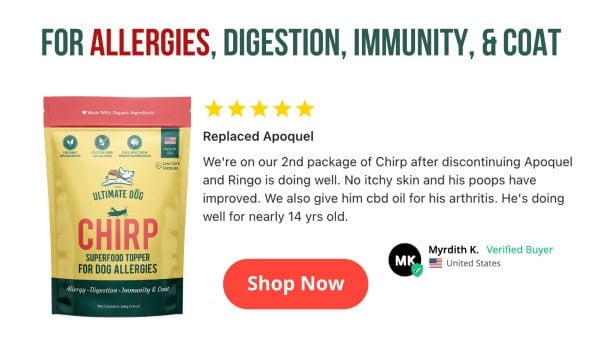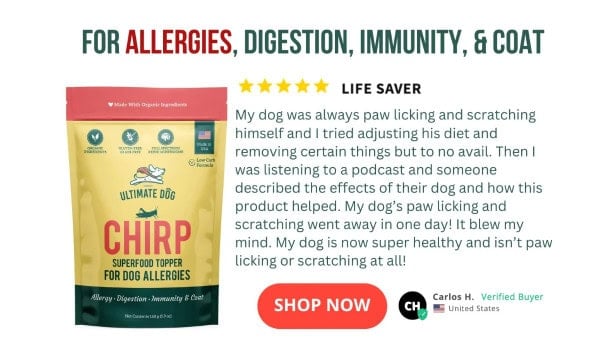|
Getting your Trinity Audio player ready...
|
In the United States, dog owners are urged to give heartworm prevention medication to their pups every single month, throughout the dog’s entire lifetime, beginning at eight weeks of age. That’s 12 doses every year and well over a hundred doses in a decade. The pressure to administer this monthly medication is immense, both on the owners and the veterinarians. In 2024, one board member of the American Heartworm Society (AHS) was quoted as saying, “We need to get vets to prescribe instead of recommend products before the client walks out of the clinic door.”
Directly prescribe instead of merely recommend. If the push is this severe, surely the disease must be absolutely deadly and nearly eliminated with such a rigorous plan of prevention? Surprisingly, the answer is no on both counts. The truth is, dog owners are told very little about heartworm disease — how it’s transmitted, what the most common outcomes are, and the potential risks of lifelong monthly medication. As such, people cannot reasonably weigh the pros and cons or make informed decisions without the full picture. So this is what this article aims to be: the full(er) picture.
How Do Dogs Get Heartworm?
Heartworm (Dirofilaria immitis) is a type of parasite that lives in the blood, predominantly in the heart and lungs, of the infected animal. It can only be transmitted through a mosquito bite! First, the mosquito has to bite an infected animal. Within two weeks, this mosquito can now infect a new animal with heartworm larvae. After six months, the larvae will grow into adult parasitic heartworms, which can survive inside the dog for several years.
Heartworm symptoms are categorized into four different classes, depending on the severity of the infection — that is, how many worms are present in the dog’s system (also called the worm count). Most of the heartworm cases are mild and asymptomatic, with the occasional exception of a mild cough. That’s a Class 1 infection. Class 2 infection presents with a moderate cough and tiredness after exercise. Class 3 comes with severe respiratory symptoms. The final stage, Class 4, is a life-threatening type of heartworm disease known as the caval syndrome; the only effective treatment for it is heart surgery.
Heartworm infections should absolutely be addressed, even the mild ones. But the idea that every single infection is a death sentence is categorically false — the majority of dogs will successfully recover from heartworms! As an example, one study looked at asymptomatic cats infected with heartworms to determine the outcomes without any treatment whatsoever. 21% of cats died, while the other 79% self-cured and fully recovered.
Heartworm Treatment for Dogs
Medical Treatment With Arsenic
The only medical treatment currently available for Class 1, 2, and 3 of heartworm disease is melarsomine dihydrochloride, an arsenic-based drug administered through a series of injections, the goal of which is to kill adult heartworms. It’s usually given in combination with antibiotics and certain heartworm prevention drugs. Because arsenic is highly toxic, this treatment poses a significant risk to the dog’s well-being and can cause severe side effects such as thromboembolism, lethargy, anorexia, paralysis, respiratory issues, abdominal hemorrhage, and more.
In the view of the AHS, alternative treatments for heartworm don’t exist, and seeking them out is pointless. Some veterinarian sources even label dog owners as irresponsible for opting for natural treatments. Let’s get something clear: When an arsenic-based therapy is the only treatment medicine can provide, it’s NOT unreasonable or irresponsible to try the natural path first, especially when the dog is not presenting with symptoms and has a lower worm count. Pet owners should not be demonized for wanting to use herbs over arsenic!
Holistic Treatment With Herbs
According to a groundbreaking case study published in 2022, Traditional Chinese Veterinary Medicine has previously successfully treated canine heartworm disease by using herbal formulas. The subject of the study was a seven-year-old dog who had not responded to two rounds of medical heartworm treatments, which is why the owner sought out alternative resources. The pup was treated with four herbal tinctures and formulas, all adapted to his specific condition and symptoms.
One of the remedies used was Lung and Heart (also called Heartworm Cough) by PawHealer, which is a mix of ten botanical ingredients, all with properties that support the blood flow and eliminate the parasites. Black walnut and Houttuynia cordata were also given to the dog, alongside another herbal tincture. The treatment was successful, confirmed with a negative heartworm test three months after the dog was first seen by the holistic veterinarian.
Alternative treatments are often criticized because they rarely follow the principle of “one size fits all” — a standard set by Western medicine where all dogs get the same one drug, come what may. Holistic veterinary medicine, in contrast, works with your individual dog and treats the disease through different avenues.
Treating a heartworm-infected dog is not something you could do on your own with one simple home remedy. The holistic treatment protocol will depend on the age & fitness of your dog, the progression of the disease, and other factors. You will need the guidance of a holistic veterinarian; perhaps finding one who is educated in Traditional Chinese Veterinary Medicine could be a good starting point.
Monthly Heartworm Prevention
In this section, we’ll take a closer look at the adverse effects of the monthly preventatives that the AHS is so passionate about. We mention the active ingredients in these medications and the names of some popular brands, but know that the full list of brands is much longer. As a whole, this group of drugs is classified as macrocyclic lactones and cannot be purchased without a veterinary prescription — hence the AHS pressuring the vets. Many of these products are also marketed as “combo” preventatives, mixing different active ingredients that target other types of parasites as well.
MONTHLY PILLS AND CHEWABLES
The two medications approved for oral heartworm prevention are ivermectin and milbemycin. Ivermectin is mostly sold under the brand name Heartgard, manufactured by the same company that makes Nexgard. Milbemycin is commonly sold under the brand Interceptor, made by the same company that sells Zenrelia. Reported adverse effects for both medications include lethargy, depression, vomiting, diarrhea, anorexia, ataxia, disorientation, seizures, hypersalivation, and blindness (for ivermectin).
MONTHLY TOPICAL SOLUTIONS
Selamectin and moxidectin are used as topical monthly heartworm preventions. Selamectin is sold under the name Stronghold, and moxidectin is named Simparica Trio — both name brands come from Zoetis, the same pharmaceutical company that manufactures Apoquel and Cytopoint.
Per its label, Stronghold is used for a lot more than just heartworm prevention; it’s also supposed to treat and prevent flea infestations, treat ear mites, certain skin conditions, lice infestations, and intestinal roundworms. BUT we’re supposed to give this to our dogs every single month to prevent ONE single disease, of course. When it comes to side effects, seizures have been observed.
Families with children are cautioned not to handle the dog on the day of treatment or let it sleep in the bed. Stronghold is also a highly flammable medication that needs to be kept away from sources of heat, which also applies to the animals treated with it until their fur is completely dry. Reading the warning label of this medication is honestly exhausting.
As for Simparica Trio, it too is intended for treating other parasitic diseases beyond heartworm and therefore comes as a mix of three active ingredients: moxidectin, sarolaner, and pyrantel. Side effects include vomiting, diarrhea, lethargy, anorexia, excessive urination, excessive thirst, and seizures — we’re all noticing a pattern here, aren’t we?
LONG-TERM INJECTIONS
Aside from being given in a topical form, moxidectin can also be injected. In the injectable form, it’s known as ProHeart 6 (effective for six months) and ProHeart 12 (effective for twelve months), both manufactured by Zoetis. An injection once or twice a year might sound like a better deal than the monthly drugs, but unfortunately, the adverse effects are even worse. In fact, ProHeart 6 was recalled seven years after it was first released to the market because the side effects were so severe: anaphylaxis, seizures, liver damage, and death.
It was eventually re-released in 2013 and followed by ProHeart 12 in 2019. The approval studies for ProHeart 12 recorded anaphylaxis as a side effect, as did the post-approval reports. Other reported side effects are seizures, liver damage, immune disorders, vomiting, diarrhea with the presence of blood, lethargy, fever, blood disorders, and more.
Let’s Talk About the American Heartworm Society
I’ve mentioned the AHS throughout this article several times because they are recognized as the authority on the subject of heartworm disease in the United States. However, the more research I did on this topic, the more I struggled to understand their approach to monthly prevention drugs. They’re pressuring veterinarians to “prescribe instead of recommend.” They repeatedly claim that ZERO natural treatments exist, despite practicing holistic veterinarians actively reporting otherwise. Why would they do that? It didn’t add up to me, so I looked into them.
It turns out that the American Heartworm Society is directly sponsored by the four main pharmaceutical companies that manufacture heartworm prevention medication. Elanco, Boehringer Ingelheim, Zoetis, and Merck Animal Health are listed on the AHS website as Platinum Sponsors. Additionally, the Vice President himself works for Zoetis as a veterinary specialist! Suddenly, the radical attitude adopted by the Society makes complete sense.
Natural Prevention of Heartworm in Dogs
Veterinary records from 4,574 clinics across the United States showed that among 83,478 dogs tested for heartworm infection, 0.53% were positive. 0.32% of dogs on medical monthly preventatives and 0.14% on preventative injections tested positive. Among the dogs without preventive medication, 0.90% tested positive. It’s entirely up to you whether you find this difference significant enough to justify the use of medical preventives and risk their side effects. But if you don’t, here are some natural ways of protecting your pup from heartworm disease:
- Know your geographic markers: Research shows that the incidence of heartworm predominantly depends on your geographic location, climate, season, and weather. These factors dictate the presence of mosquitoes, which are the only transmitters of heartworms. Generally speaking, mosquitoes prefer warm and humid areas, are mostly active in the hot months, and hover near still sources of water. The areas with the highest prevalence of heartworm disease in America are the Atlantic coast, the Gulf of Mexico, and the Mississippi River.
- Protect your dog from mosquitoes: Don’t take your dog to any places that harbor lots of mosquitoes, especially if you live in higher-risk areas. This includes lakes, swamps, creeks, and similar sources of water, as well as thick woodlands. In your backyard, avoid bird baths, kiddie pools, and the like. Use natural mosquito repellent sprays throughout the warmer seasons and whenever you’re traveling to heartworm-heavy areas.
- Make garlic part of your dog’s diet: Garlic has tons of antiparasitic properties and is well-known for repelling mosquitoes. We have a full article on the benefits of garlic for dogs! Additionally, you can support your dog’s immune system with other natural supplements that are specifically geared towards heart function and respiratory health.
- Schedule regular heartworm tests: Antigen and microfilaria testing are the two most common testing methods. If you live in a place that ticks off a lot of the geographic markers we listed above, it’s a good idea to test your dog every few months, not just for the peace of mind, but also to catch the potential infection while it’s still early and mild.
Considering Terrain Theory
Here’s an obvious question that many of us never fully considered: How come some dogs get sick and others don’t, even when they’re all exposed to the same parasite or bacteria? Why do some dogs get infected even though they’ve gotten preventative medication? And why do some have worse symptoms than others? This question is at the very core of terrain theory, which proposes that an animal’s internal environment plays a significant role in determining whether the animal will get infected, even more so than mere exposure to the parasite.
Holistic Actions words this concept quite beautifully: “It can be helpful to think of pathogens as seeds, and a human (or animal) body as a larger ecosystem or garden. Gardeners know that just because you plant a seed, that’s no guarantee it will take root and grow. For a seed to take root and develop into a fully-fledged plant, it requires an entire ecosystem of hospitable conditions.” In other words, some dogs have an inner terrain that makes parasites thrive, while others don’t.
We emphasize the importance of a strong immune system in almost every article. A pup with a diverse gut microbiome, a biologically appropriate diet, and an overall healthy lifestyle will have a stronger immune system and therefore be a less ideal host for parasites. It’s not about being the perfect dog owner — we’re all still learning, and sometimes we have to adapt to the ever-changing circumstances of our daily lives. But we want to encourage you to make small changes to support your dog’s health. Whether it’s supplementing probiotics, enriching their kibble diet, or switching to scientifically proven natural options for allergies and tick prevention, no step is too small.
There’s a reason why domesticated dogs fall ill with the exact same diseases humans do, and at very similar rates — they live in our hyper-modern, largely unnatural, and over-medicated world. One study found that wild foxes living in areas with regularly dewormed livestock guardian dogs have more parasites than foxes living in areas without dogs! Another study showed that only about 24% of wild wolves get cardiopulmonary parasites, and the worm burden in infected animals varies greatly. Considering these are animals that never receive any preventatives, live outside full-time, eat other wild animals, and drink from natural water sources, we might have expected them to all be diseased and “full of worms.” And yet, research simply shows otherwise.
Sources
Larkin, Malinda. “Heartworm incidence climbs despite preventive efforts.” AVMA, 10/08/2024.
“Keep the Worms Out of Your Pet’s Heart! The Facts about Heartworm Disease.” FDA, 22/12/2022.
Genchi, Claudio. Venco, Luigi. Ferrari, Nicola. et al. “Feline heartworm (Dirofilaria immitis) infection: A statistical elaboration of the duration of the infection and life expectancy in asymptomatic cats.” Science Direct, 10/12/2008.
Lankenau, Cynthia. “CASE REPORT — USING HERBS TO TREAT HEARTWORM IN A DOG.” IVC, 25/10/2022.
“Diroban (melarsomine dihydrochloride).” Zoetis, 01/2020.
Collins, Brian. “Heartworm disease.” Cornell University College of Veterinary Medicine.
Epstein, E. Steven. Hollingsworth, R. Steven. “Ivermectin-induced blindness treated with intravenous lipid therapy in a dog.” PubMed, 14/01/2013.
“Heartgard.” Boehringer Ingelheim, 2019.
“Interceptor.” Elanco, 2021.
“Stronghold.” EMA.
“SimparicaTRIO.” Zoetis, 04/2024.
Sorah, Emily. “Moxidectin for Dogs.” TVP, 15/06/2022.
“American Heartworm Society Sponsors.” AHS.
“Executive Board.” AHS.
Mwacalimba, Kennedy. Morrison, Ann Jo. Ly, Patrick. Et al. “Prevention and long-term outcomes of naturally occurring canine heartworm infection in primary care settings.” PubMed, 15/01/2024.
“A Way To Connect Modern Veterinary Medicine And Ancient Wisdom: An Introduction To Terrain Theory.” Holistic Actions.
Arzabe, A. Ariel. Retamal, Patricio. Simonetti, A. Javier. “Livestock guarding dogs have minor effects on the parasite burden of wild carnivores.” PubMed, 25/10/2021.
Estévez-Sánchez, Efrén. Checa, Rocío. Montoya, Ana. Et al. “A High Prevalence of Cardiopulmonary Worms Detected in the Iberian Wolf (Canis lupus): A Threat for Wild and Domestic Canids.” PubMed, 03/09/2022.

Luna’s passion for learning about canine psychology and behavior began when she adopted a severely reactive puppy from a local shelter. She is now a big advocate for positive reinforcement and compassionate training. As a writer, she strives to spotlight the topics that fly under the radar and be the voice for all who cannot speak for themselves.





Leave a Comment